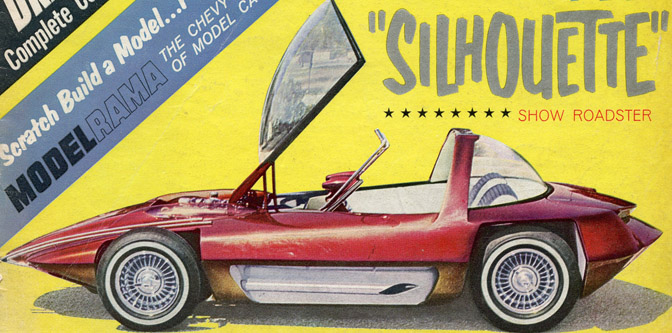The Silhouette in Three Forms

Most people will argue that show rods are nothing more than static artwork. They’re combinations of fiberglass and metal loaded with gallons of chrome and paint that will never see the road. Their intricate exhaust pipes never blue and their translucent fuel lines remain as dry as can be. Paintwork stays pristine and there’s nary a scuff on the whitewalls. Maybe these cars moved in a past life, but once they’re in the game for points and trophies, their transportation days are exchanged for a swim in the angel hair sea. Big deal, right? The folks who build them have other cars to carry out their daily tasks, so there’s no sense in scraping up the show rod for a trip to the post office or supermarket. Point taken.
This debate about these cars’ functionality has been circulating for decades, surfacing in print and online from time to time. It’s an argument that boils down to owner preference (which I fully support) that I can’t help but feel conflicted about. I like show rods a great deal. From the “Beatnik Bandit�? to the “Boot Hill Express,�? the kid in me has always been attracted to their outlandish proportions and unbreakable allegiance to a single theme. Sure, they got wild and ungainly as the decades wore on, but they were—and still are—an irreplaceable part of our hobby (Yes, that even includes the Barris “Bathtub Buggy.) But if you turn back the clock to the early 1960s, a different type of show car was on the rise.
The first batch of wild, one-off rods set the hobby on its ear. They scored covers, demanded attention and were reproduced in 1/64th and 1/25th scale so that the world could have their own miniature pieces of the dream. And that’s exactly how I came across Bill Cushenberry’s “Silhouette�? close to four decades after it made the cover of Rod & Custom in January 1963. I don’t think I ever finished the highly detailed AMT kit (I know for a fact the motor got yanked for a scratch-built dragster), but I did hold on to the magazine for future reference.
It wasn’t until a few weeks ago that I started thinking about the Silhouette again. I was wandering around an antique store in downtown San Francisco when I stumbled upon an old trophy in one of the booths. It was about ten inches long and a little less than a foot tall. A cast arch with a pair of crossed pistons sprouted from the wooden base, while a pair of what seemed like mag wheels were rendered on either side. Atop the trophy sat a crudely formed car. There was no doubt that it was modeled after Cushenberry’s Silhouette, but it had been modified to fit the trophy’s tooling limitations. Gone were the fully exposed wheels and open engine compartment, as well as the side pipes and sculpted tail. It still featured the distinct pointed nose, rocker coves and most importantly the two-piece bubble top. I scoured the piece—labeled “Vintage Trophy�? on a paper tag—for any sort of markings indicating its origins. There weren’t any.
Although I left the mystery trophy for the next browser, I did dig back into my R&C collection to catch up with the Silhouette. The staff dubbed it the “Fantastic Roadster of the Future,�? and Bill Neumann’s three-page feature captures all the details of the expertly crafted show rod. After reading the article, I came across some footage that I had never seen before of the Silhouette in action (in full color!). If you have the time, glance at the trophy, check out the R&C content and then view the video. Show rods are spectacular machines—regardless of what form they take—but there’s no doubt that they look best in motion.
—Joey Ukrop
Photos by Bill Neumann, R&C Jan. 1963. Video from The Wonderful World of Wheels, courtesy of sparky427







